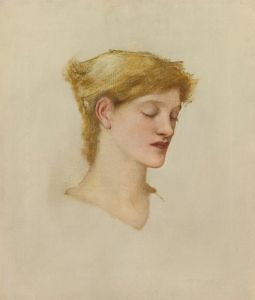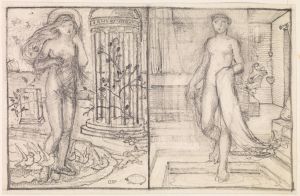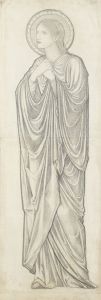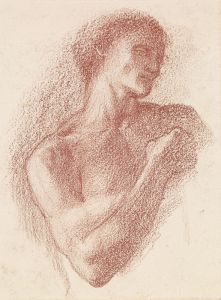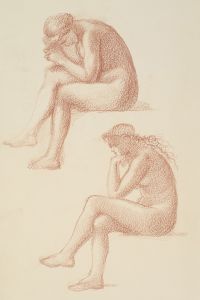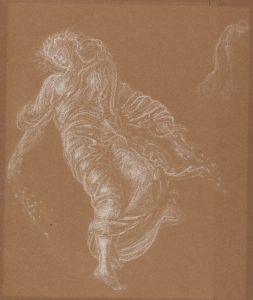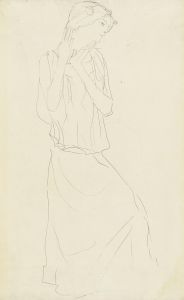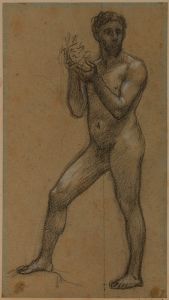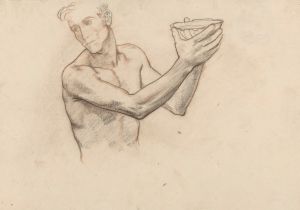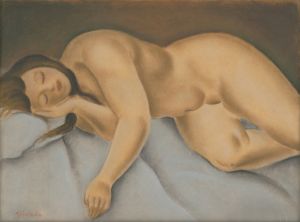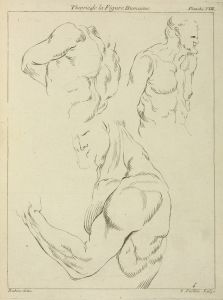
Study of a standing male nude
A hand-painted replica of Sir Edward Coley Burne-Jones’s masterpiece Study of a standing male nude, meticulously crafted by professional artists to capture the true essence of the original. Each piece is created with museum-quality canvas and rare mineral pigments, carefully painted by experienced artists with delicate brushstrokes and rich, layered colors to perfectly recreate the texture of the original artwork. Unlike machine-printed reproductions, this hand-painted version brings the painting to life, infused with the artist’s emotions and skill in every stroke. Whether for personal collection or home decoration, it instantly elevates the artistic atmosphere of any space.
"Study of a Standing Male Nude" is a drawing by the British artist Sir Edward Coley Burne-Jones, a prominent figure in the Pre-Raphaelite Brotherhood. Burne-Jones, born in 1833 and passing in 1898, was known for his contributions to the Pre-Raphaelite movement, which sought to return to the detail, intense colors, and complex compositions of Quattrocento Italian art.
The drawing "Study of a Standing Male Nude" exemplifies Burne-Jones's meticulous approach to figure studies, which were often preparatory works for his larger paintings and stained glass designs. This particular study showcases his skill in rendering the human form with precision and sensitivity. The male figure is depicted standing, with careful attention to anatomical details and the play of light and shadow on the body. The pose is naturalistic, reflecting Burne-Jones's dedication to studying the human figure from life.
Burne-Jones often used such studies to explore the human form and to perfect his technique before incorporating figures into his more elaborate compositions. His works were characterized by their romanticism and often featured mythological, literary, or biblical themes. The Pre-Raphaelite Brotherhood, which he was associated with, aimed to reject the mechanistic approach to art that had become prevalent during the Industrial Revolution, instead advocating for a return to the rich, detailed, and vibrant works of the early Renaissance.
The drawing is executed in a medium that Burne-Jones frequently employed for his studies, likely graphite or charcoal on paper. These materials allowed him to achieve fine detail and subtle gradations of tone, which are evident in the careful modeling of the figure's musculature and the nuanced depiction of light and shadow.
Burne-Jones's studies, including "Study of a Standing Male Nude," were not merely academic exercises but were integral to his creative process. They provided a foundation for his larger works, where figures often appeared in complex, allegorical compositions. His ability to convey both the physicality and the idealized beauty of the human form was a hallmark of his style and contributed to his reputation as one of the leading artists of the Victorian era.
The drawing is part of the broader body of Burne-Jones's work that has been preserved and studied for its artistic and historical significance. His contributions to art were recognized during his lifetime, and he was knighted in 1894 for his services to the arts. Today, his works are held in numerous public and private collections, and they continue to be celebrated for their beauty, craftsmanship, and the unique vision they represent.
In summary, "Study of a Standing Male Nude" by Sir Edward Coley Burne-Jones is a testament to the artist's skill in figure drawing and his dedication to the principles of the Pre-Raphaelite Brotherhood. The drawing reflects his meticulous approach to art and his ability to capture the human form with both accuracy and grace.





